Sit at our table and hold on to the tablecloth: a delicious gastronomic journey through time begins.
The Mediterranean. A melange of flavours from distant shores. Ancient recipes that came on boats and melded with pre-existing ones in a generous land with fertile soil and a rich seabed. Discover its treasures. We have an entire suite of delicious dishes that will nourish your body, delight your palate, and take you on a gastronomic journey that’s been centuries in the making. Savour it.
Phoenicians, Romans, Moors and Catalonians have inhabited these shores, leaving behind tastes, aromas and culinary cultures that time has simmered down and distilled, gradually producing a set of recipes unique to this island. The macerations and marinades, the saffron, cinnamon and honey; the minced and sautéed bases of our stews and rice dishes; even the codfish that arrived from the north of Europe on boats in search of our salt, are examples of the influences that have infiltrated our cuisine and then stayed for good in our recipes. Sweet and savoury traditions, which, even today, are being transformed by the influences of the current age, giving rise to new creative dishes inspired from both inside and outside our shores. The way it’s always been. We invite you to come along on this delicious voyage through centuries of eclectic dining.
Ibiza's traditional specialities
Sit down and embark on a gastronomic journey that makes every dish both exceptional and traditional, for example: borrida de ratjada (ray fish stew), bullit de peix, octopus frita, slaughter-day rice, frita de porc, squid a la bruta, country salad with crostes (chunks of hard bread) and cod or other dried fish, broad bean potage, rice with cauliflower and gerret, the list goes on.
You can also follow the sweet trail of our desserts, with lip-smacking specialities such as sugar-coated fritters; greixonera, a type of bread pudding made with ensaimada pastry; orelletes; flaó, with its singular dialogue of flavours between sheep’s cheese and spearmint; or the thick, rich salsa de Nadal (Christmas sauce), an unusual sweet concoction with undeniably Moorish roots.
Ibiza's recipes that will surprise you
We are now going to give you a foretaste of what our traditional dishes consist of so that you can order them when you see them on the menu at restaurants featuring Ibicenco cuisine in the municipality of Santa Eulària. This way, when you sit down at the table, you’ll have your list of gastronomic wishes and priorities at the ready…
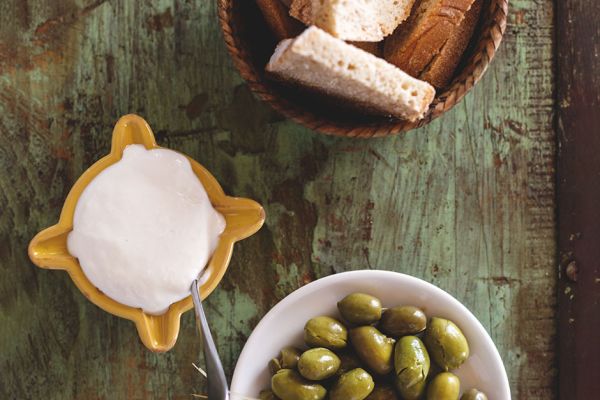
Pa pagès, all i oli and olives
The accompaniment par excellence to any meal in Ibiza is some good pa pagès, a dark dense bread eaten with aioli and olives. The olives, whole or split, are prepared in brine with different seasonings of herbs and aromatic plants. The aioli (all i oli in Catalan) is made in the traditional way by pounding garlic to a pulp in a mortar and then emulsifying it with oil and salt.
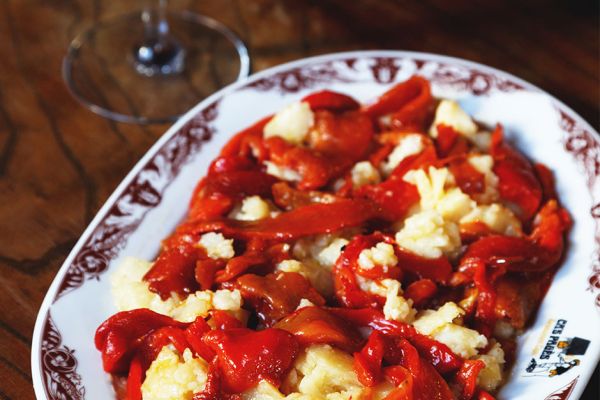
Country potato salad
The salad known as pagesa is based on the humble potato, which yields abundant harvests. In its original form, the potatoes were boiled, roasted bell peppers were added, and a dressing of minced garlic and olive oil finished off the dish. Today, several variations exist in which other ingredients are added such as tomatoes, onions, olives, tuna, hard-boiled eggs, etc.
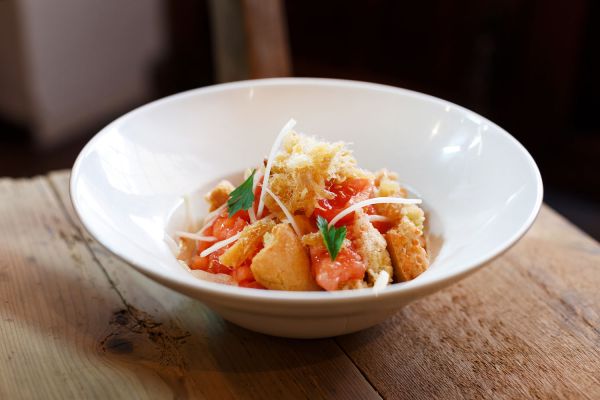
Salad of crostes
The main ingredient in this dish are crostes, chunks of country bread that have been
baked and will thus keep for a long time. In days gone by, crostes were used in houses when, for whatever reason, fresh bread was not available. Fishermen also used them when they spent long stretches at sea. Originally, the salad of crostes was made by mixing these chunks with olive oil and dried fish. The modern-day recipe includes other ingredients, such as tomato, onion, and garlic.

Slaughter-day rice
The dish known as arròs de matances, or slaughter-day rice, was originally prepared only on the day when a pig was slaughtered. Today, however, you can eat it year round at any of Ibiza’s traditional restaurants, although, due to its heartiness, it lends itself more to wintertime. It is prepared by sautéing pork meat with pebrassos (chanterelle wild mushrooms), vegetables, a blend of aromatic seasonings ground in a mortar and pestle, and a hint of cinnamon, which gives the dish its characteristic taste.
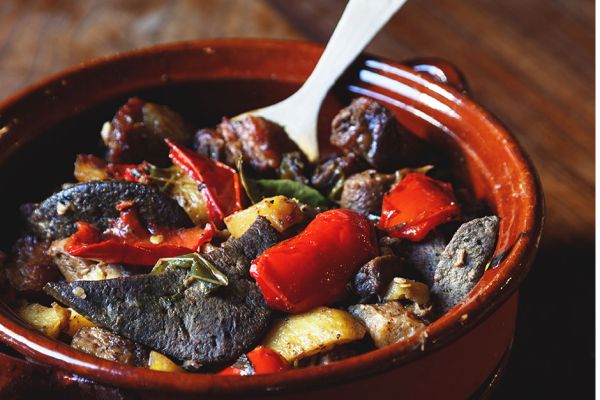
Frita de porc
The dish known as frita de porc, or fried pork, is also traditional fare made on the day of the pig slaughter, hence, during the cold weather. It is prepared by frying pieces of lean meat with pebrassos (chanterelle wild mushrooms), peppers and garlic. Then potatoes, previously fried in another pan, are added.
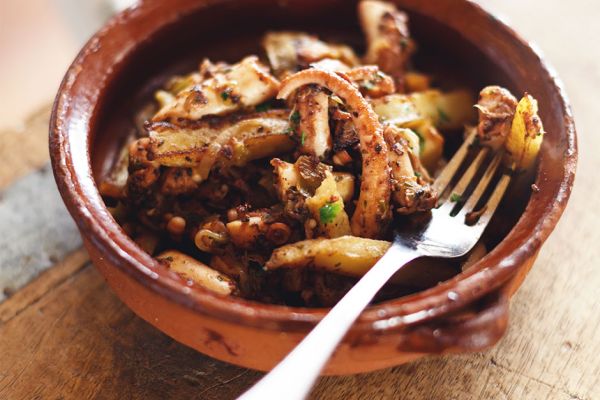
Frita de polp
The dish known as frita de polp, or fried octopus, is one of the island’s traditional tapas, and one you’ll find in many establishments across the municipality. It is made with octopus, potatoes, peppers, onions and garlic – a tasty, appetizing nosh.
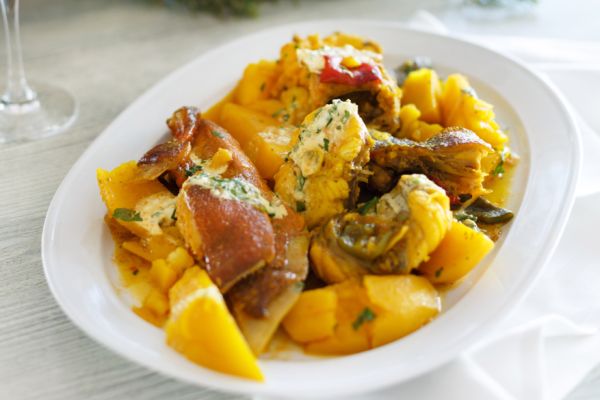
Bullit de peix
The dish known as bullit de peix is today considered a delicacy prepared with the best that our island waters have to give, varieties such as monkfish, scorpionfish, John Dory, and grouper. Nonetheless, the dish comes to us from humble origins, having been an old fishermen’s recipe that was prepared on board the boat with types of whitebait and rockfish that were unsellable at market. According to tradition, the fish is eaten first, boiled with potatoes and enriched with a base of tomato, garlic, parsley, and ñora (a type of red pepper), all slathered in traditional all i oli to potentiate the flavour. Then, comes the arròs a banda, rice cooked in fish stock with pieces of cuttlefish.
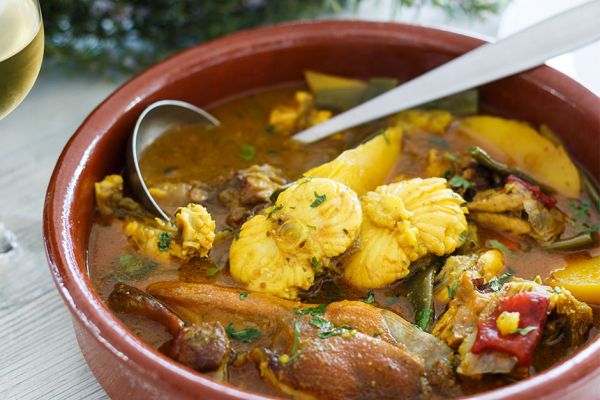
Guisat de peix
The dish known as guisat de peix is a stew made with potatoes and several types of rockfish, the most prized varieties being grouper, rotja (scorpionfish), John Dory, white seabream, monkfish, and greater amberjack. It is made by sautéing peppers, tomatoes and onions, to which fried and minced almonds are then added along with parsley, garlic and ñora peppers. Today considered a delicacy, it was once fishermen’s fare.
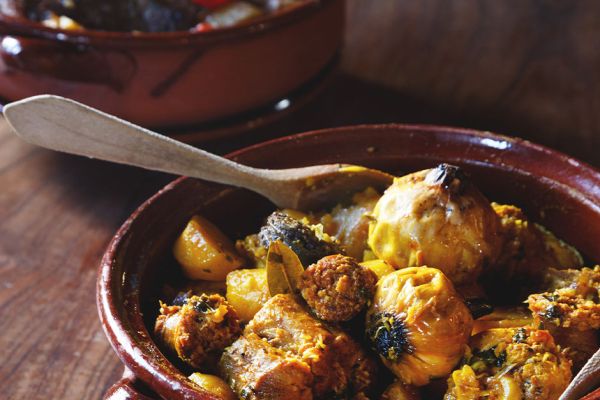
Sofrit pagès
In days gone by, fish was inexpensive and many islanders would go out to catch it themselves, thus eating it on a regular basis. For this reason, when important holidays came round, meat was considered the superior viand and found its culinary expression in a dish known as sofrit pagès. This stew-like concoction combines the meats of farm-raised chicken and lamb with vegetables and patató (small whole potatoes), along with two popular varieties of Ibicenco sausage, sobrassada y botifarró, each of which imparts its characteristic flavour. During the cooking process bay leaves are added as well as minced garlic, parsley and peppers.
Ibiza’s favourite desserts
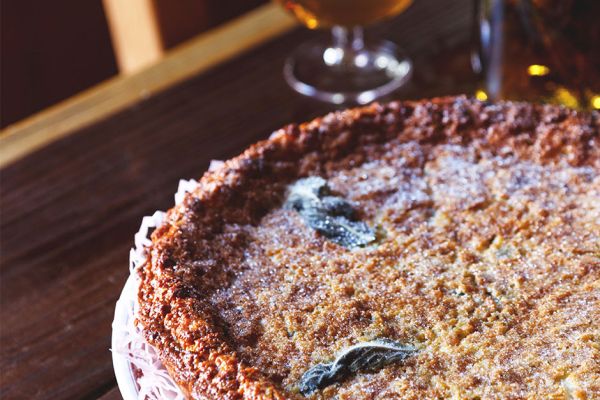
Flaó
The cake known as flaó is one of the most well-known in island gastronomy. Its origin is uncertain, but its first appearance on the historical record dates back to 1283 in the book Blanquerna, by Ramón Llull. This dessert is made with the cheese of sheep and goats, sugar, eggs and spearmint. It was traditionally made at Eastertime, when the ingredients needed to make it were abundant. Today it is made year round, for which reason you can try it at any number of restaurants, or buy it in a bakery.
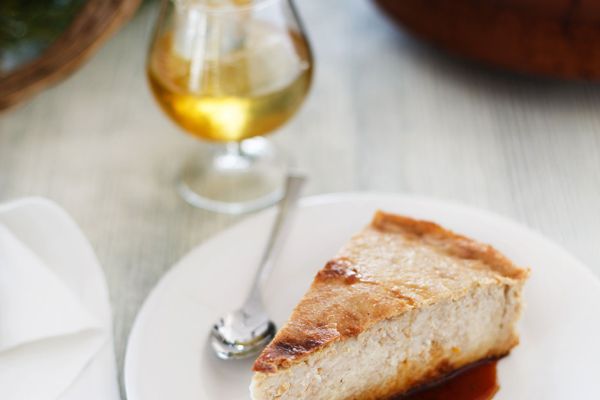
Greixonera
The dessert known as greixonera is a type of bread pudding often found at family celebrations. It is traditionally made from ensaimada pastries leftover from the previous day, or even with dry bread, plus milk, eggs, cinnamon and lemon. Despite its simplicity, it is really quite exquisite tasting.
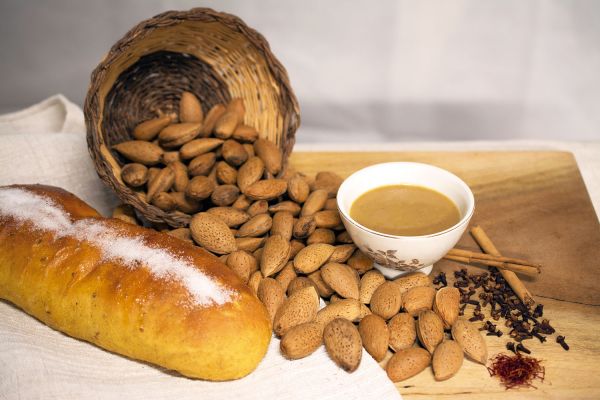
Salsa de Nadal
The Christmas sauce known as salsa de Nadal is one of the most deeply-rooted culinary traditions in Ibiza and Formentera and is thought to be a legacy from the Moorish period. Made with almonds, eggs, honey, cinnamon, clove, totespècia (allspice), saffron and chicken stock, this thick puree is eaten during the holiday season with bescuit pagès, a sweet bread baked specially for the occasion.

Café Caleta
This drink is an old fishermen’s recipe, drunk by veteran seadogs to keep warm. It is made with brandy, cinnamon, coffee beans and the zest of lemon and orange. Today you can enjoy a cafè caleta at any number of traditional restaurants, where, even if it is not specifically offered on the menu, will gladly be made at the customer’s request.



